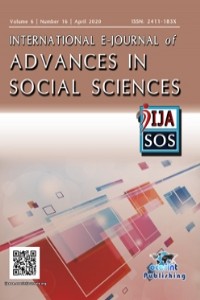A STUDY OF HYDRO RESOURCE MANAGEMENT AT EARLY HISTORIC SITE OF KANHERI, MAHARASHTRA: AN ENGINEERING PERSPECTIVE
Abstract
Kanheri known as “Krishnagiri” or “Krishnasaila” in ancient inscriptions is located (19° 13` N. and 72° 59` E) 10 Km to south east of Borivali, a suburb of metropolitan Mumbai. It is a rock cut cave complex comprising of more than 110 Buddhist caves including chaityas, Viharas, Stupas, cells etc. This site culturally dates back from 2nd century C.E to late 11th Century C.E. Kanheri is distinctively known for its sustainability as well as certain peculiar features like site’s multi-storied settlement pattern, satellite settlements, developed water conservation system, brick memorial gallery, connectivity through rock cut steps etc. Apart from this, Kanheri stands out to be unique due to its well-developed hydro resource system which was operational for more than a millennium. The water must have been an important commodity for the ancient monks so as today. Thus a system that regulates the resourceful conservation of water during scarcity periods can be noticed at site. The prominent elements comprising of this hydro resource system are cisterns, large tanks, a dam/ reservoir, water channels and its connectivity. There are some inscriptions found associated to donations of these cisterns and tanks suggests us a methodology for dating numerous caves and its cisterns respectively.
A study of water management at the site considering the epigraphical, social and religious aspects has been attempted by various scholars till now. But this paper exclusively aims at investigating the significance of ancient hydraulic mechanisms that are evident at site, intends to prove the ancient administrative structure of monastery which regulated the advancement of engineering to sustain their livelihood. Thus an attempt will be made to study the mechanism behind this system considering the scientific and mechanical perspectives with the use of engineering principles.
References
- Shaban. A & Sharma.R, (2007), Water Consumption Patterns in Domestic Households in Major Cities, Economic and Political Weekly, pg. 2. Shaw. J & Sutcliffe J, (2003), Ancient Dams, Settlement Archaeology and Buddhist Propagation in Central India: The Hydrological Background., Journal of Hydrological Sciences, 48(2), p.p.277 – 291
Abstract
References
- Shaban. A & Sharma.R, (2007), Water Consumption Patterns in Domestic Households in Major Cities, Economic and Political Weekly, pg. 2. Shaw. J & Sutcliffe J, (2003), Ancient Dams, Settlement Archaeology and Buddhist Propagation in Central India: The Hydrological Background., Journal of Hydrological Sciences, 48(2), p.p.277 – 291
Details
| Primary Language | English |
|---|---|
| Journal Section | Research Article |
| Authors | |
| Publication Date | September 10, 2020 |
| Submission Date | February 10, 2020 |
| Published in Issue | Year 2020 Volume: 6 Issue: 16 |
Contact: ijasosjournal@hotmail.com
The IJASOS Journal's site and its metadata are licensed under CC BY
Published and Sponsored by OCERINT International © 2015- 2025

